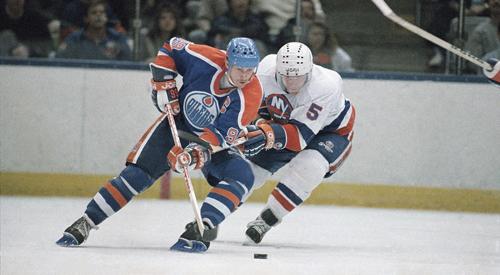
The Stylish One
In today’s world, we all worry about our appearance – hockey players are no different.
To the blind eye, when watching a hockey game, the equipment players wear is solely for protection. But, to many, these articles mean so much more. They are a way to express one’s self while in action, and, in hockey, the options for expression are endless.
Let’s start off with what they call “flow”. Naturally most of you reading this just ran your fingers through your hair and said something along the lines of, “Dude, I got sick flow”. As I’m sure most of you have seen a friend or family member who has went a while without cutting his “flow” (and I said his because it’s almost impossible for a female hockey player to have flow due to their natural long length of hair).
There is a difference, though, when it comes to good flow and bad flow. Old school Jaromir Jagr circa 1999 and, say, Jeremy Roenick anytime in his career, they both have great flow. Now, a guy like Mike Ricci, not so much.
The key to sick flow is to have it coming out the back and/or sides of your helmet and wave in the wind when you’re flying down the ice.
Staying with the head, the helmet – or bucket – has always been a great form of expression due to the number of different styles there are, especially now with the evolution of visors – “viseys” if you will (Editor’s note: I won’t) – around the league.
When looking to be stylish, the bucket is the perfect place to start. The legendary JOFA helmet Wayne Gretzky used to wear in Edmonton was just that, legendary. Now, the Nike bucket that Mario Lemeiux wore circa 2002 Olympics? Ouch.
[php snippet=1]
In the NHL, guys like Scott Neidermayer and Ales Hemsky show how a visor can make a player stand out whereas superstars like Evgeni Malkin and Dany Heatley should really think twice before locking into a bucky with that kind of visey on it.
Going back to Gretzky, if there was a holy grail of hockey style back in the 1980s, The Great One found it and had sex with it. Not only was he the best to ever play the game, he was easily the best looking to do so too.
He was the reason for the “Gretzky Tuck”, you know, tucking in the one side of your jersey into your pants. This is an amazing look, especially with flow while you’re zipping down the ice.
Many players have looked to copy Gretz with a jersey tuck, Roenick did it for a bit, but it’s risky business because too much or too little of a tuck and before you know it you’ve ended up on the Worst Dressed of the season.
Take Jim Dowd for instance. Jim: First off, I’m sorry. Second, what on earth are you thinking? Dowd is the only guy in the league that thinks you should be in a tuxedo while playing puck. He tries to pull off the full tuck. Yes, you read that correctly, the full jersey tuck, the dress shirt into the pants. Word for the wise, don’t ever try and pull this off. Never.
Another thing Gretz did that a lot of players are doing now is going “tongues out”. It’s where you bend the tongues of your skates forward so they run perpendicular with the blade of your skate and your shin-pads go in behind.
If you’re going to sport the tongues out, you have to be willing to stick with it. You can’t have sloppy style elsewhere and expect to be respected.
All of which brings us to Vintage style. This is a dying breed, just based on the times. With young players taking over the league in recent years, they have adapted to all of the new equipment and some, like Marc Savard, enjoy a new stick every game and new equipment every year.
A seasoned veteran like Chris Chelios, however, is still wearing the same shoulder pads he wore in ‘Nam, and the same skates he wore when he was 17 years old. Vintage is slowly fading away, but still lethal for those who sport it.
So when you sit down to enjoy the NHL playoffs, take a look at the style of your favourite and least favourite players, it may give you a whole new respect for how much thought goes into the attire.
And I didn’t even mention tape jobs.
[php snippet=1]

